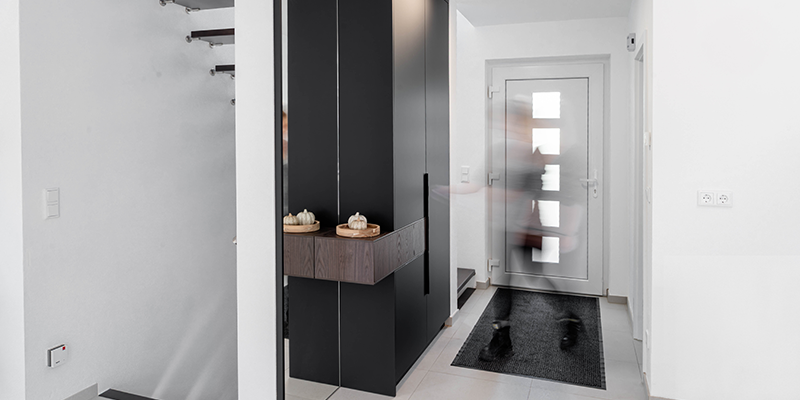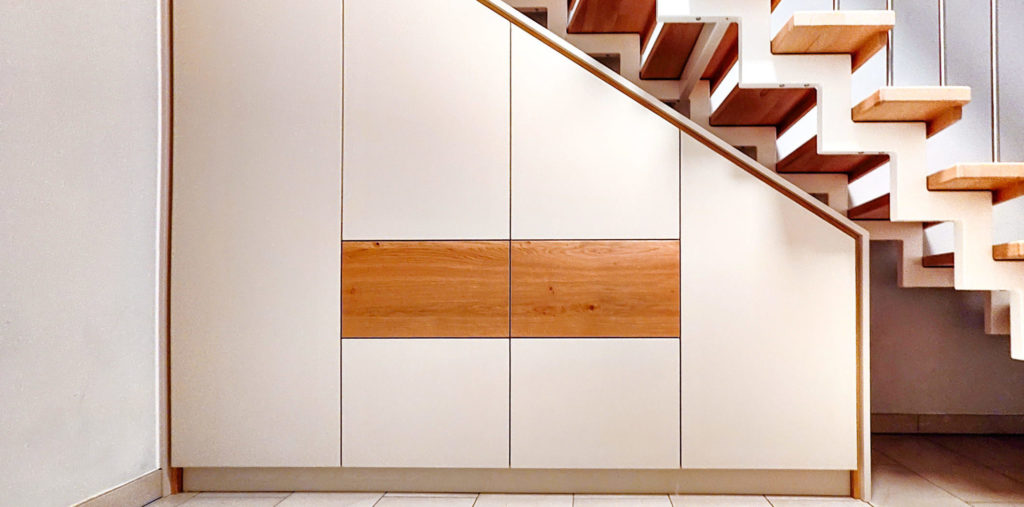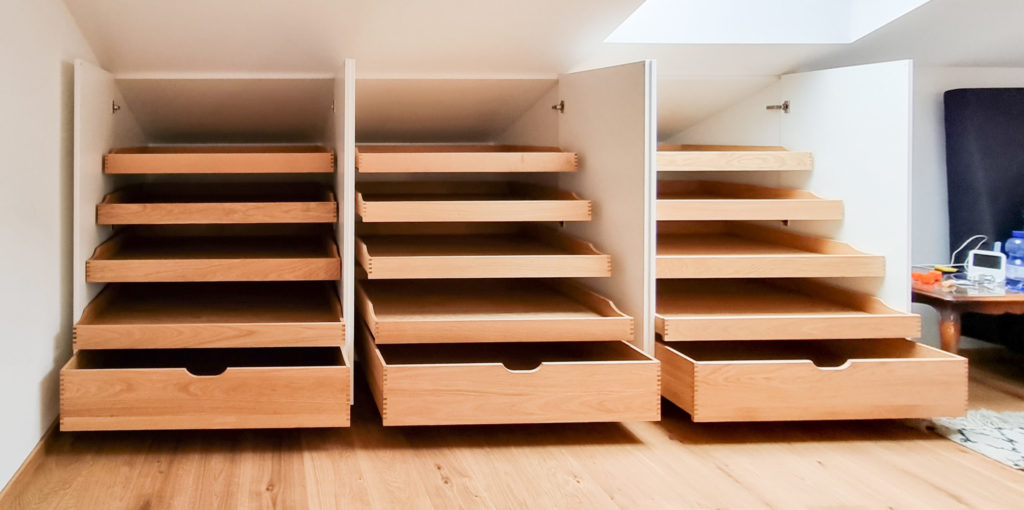Built-in cupboard vs. freestanding cupboard
When furnishing a room, you are often faced with the decision: built-in cupboards made to measure or freestanding cupboards? Both options have their own advantages and characteristics that make them unique for different living situations and needs. Built-in cupboards, made to measure and integrated directly into the architecture of the room, offer a seamless aesthetic and maximise the available space. On the other hand, freestanding wardrobes offer flexibility and the option to move or replace the piece of furniture if necessary. In this blog post, we highlight the key differences between built-in and freestanding wardrobes, discuss their pros and cons, and offer tips on how to make the right choice for your home. Whether you’re renovating or simply refreshing your interior, choosing the right type of wardrobe can have a big impact on the functionality and appearance of your space.
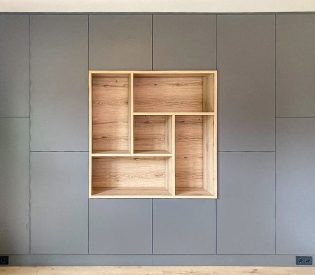
What is a custom-made built-in cupboard?
The advantages of built-in cupboards
- Customised cupboards: Built-in cupboards are made precisely to your measurements and requirements. They fit perfectly into the space provided and make optimal use of even unusual room layouts.
- Maximum use of space: They allow you to use every available square centimetre, which is particularly advantageous in small or unusually shaped rooms. This means that even the depth can be customised, as well as the height of the cupboard.
- Uniform appearance: Built-in cupboards offer a consistent, uniform appearance that blends in with the architectural elements of your room.
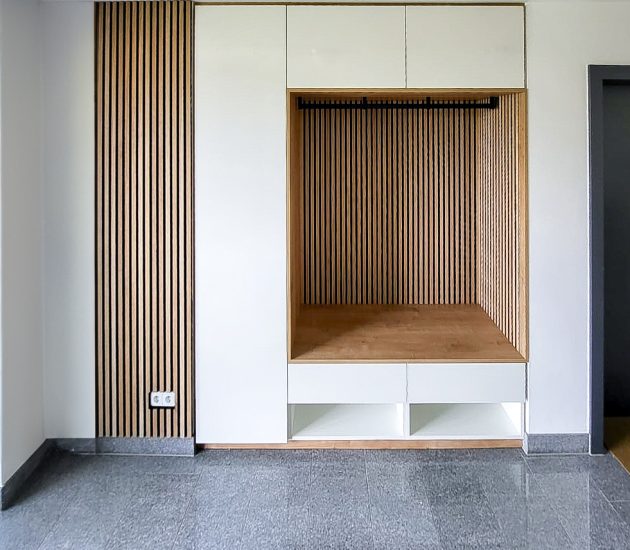
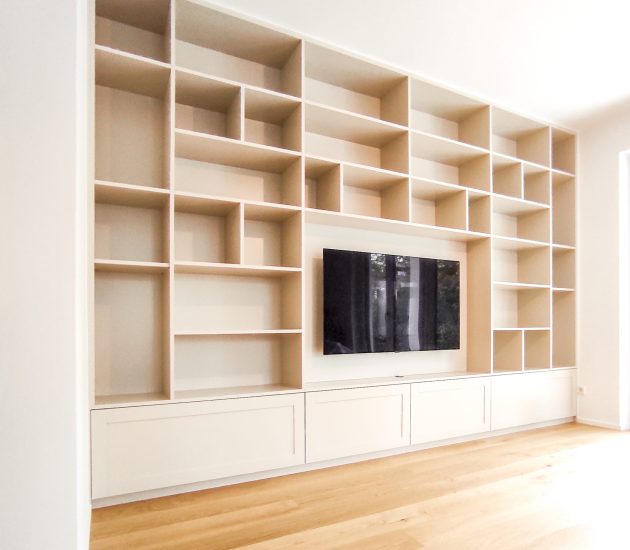
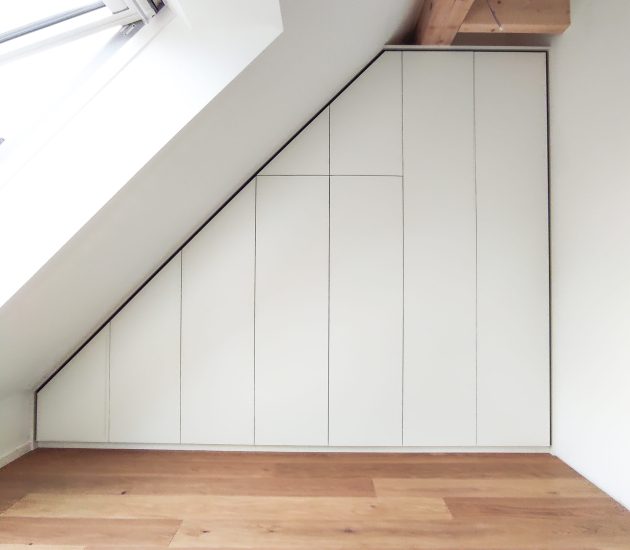
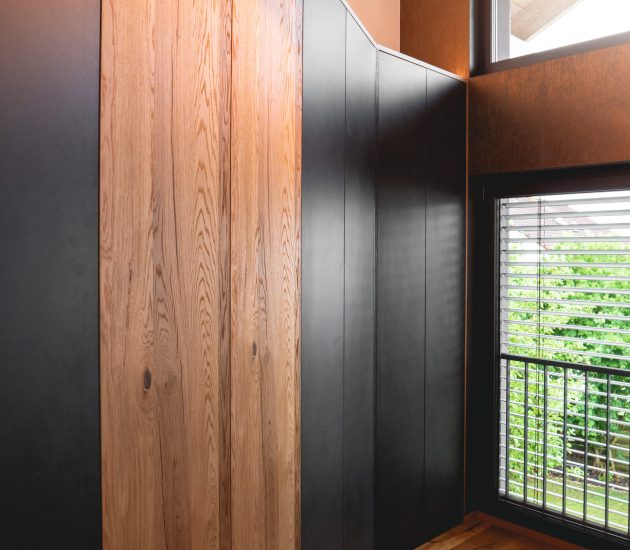
The disadvantages of built-in cupboards
- Less flexibility: Once installed, they are permanently anchored in the room. This means that it is not possible to move them around or take them with you when you move house.
- Higher costs: Because they are custom-made, built-in cupboards can be more expensive than their freestanding counterparts.
Typical areas of application and examples
- Bedroom: For a seamless wardrobe that blends perfectly into the room.
- Kitchens: For optimal use of available space, often above and below the work surfaces.
- Living rooms or offices: For bookshelves or media centres that fit perfectly into the designated niches.
- Dressing room: For optimal use of the available space in the wardrobe.
What are freestanding cabinets?
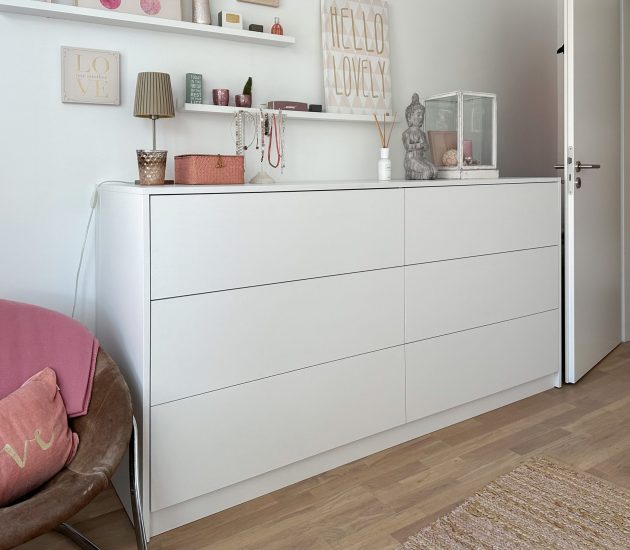
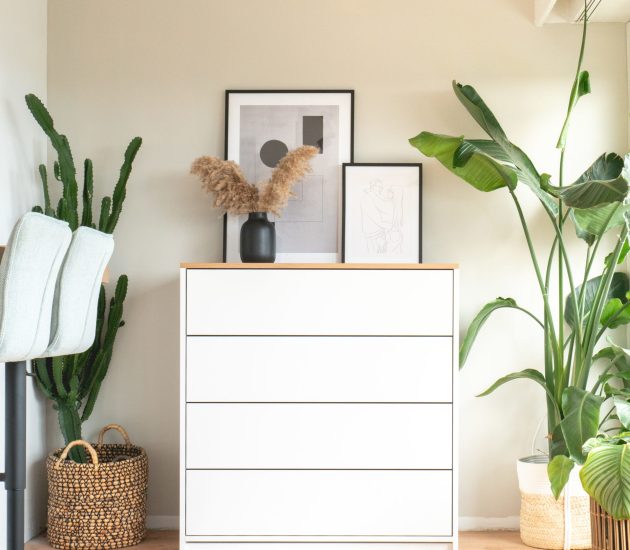
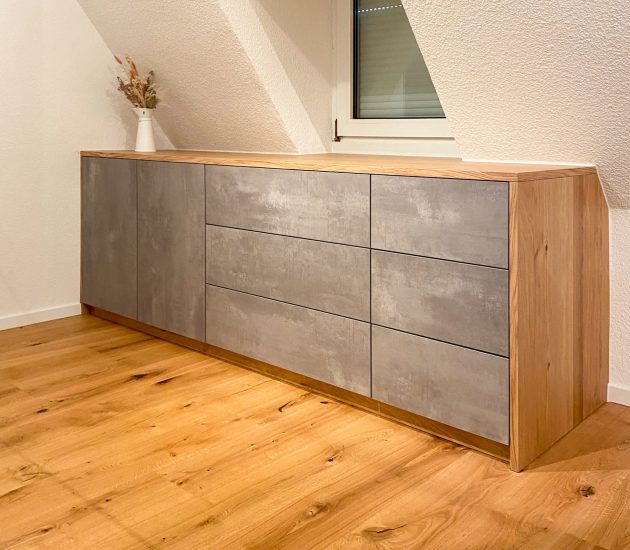
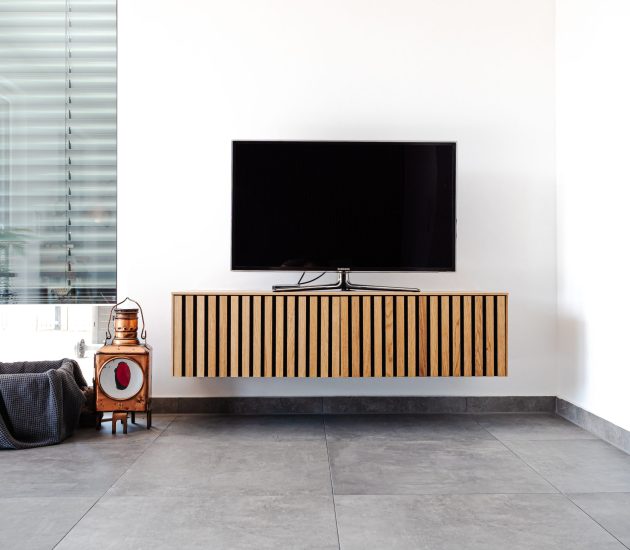
Freestanding cabinets are independent pieces of furniture that can be placed anywhere in the room without being permanently attached to a wall or other element. This flexibility makes them particularly popular, as you can move them around as you wish, swap them out or simply take them with you when you move house. Unlike built-in cabinets, which are designed specifically for a fixed location, these offer the possibility of redesigning rooms quickly and easily.
The advantages of freestanding cabinets
- Flexibility: You can change the position of the cabinet at any time, which is particularly useful if you like to change your interior design often or move house.
- Versatility: Freestanding cabinets come in a wide range of designs, sizes and styles, so you can easily find a model that matches your existing interior.
- Cost: They are often cheaper than built-in cupboards, as they are mass-produced and do not need to be customised.
The disadvantages of freestanding cupboards
- Use of space: You may not be using the available space as efficiently as built-in cupboards, especially in alcoves or under sloping ceilings.
- Stability: As they are not permanently installed, they can be less stable, especially if they are high up and not adequately secured.
Typical areas of application and examples
- Bedroom: As a wardrobe in which clothes and accessories can be stored neatly with the help of a shelf, a clothes rail or even a clothes lift.
- Living room: For books, decorative items or as a media cabinet.
- Children’s rooms: Offer flexible storage options that can grow with your children’s needs.
- Dressing room: As a wardrobe in your unique dressing room.
How to choose the right cupboard?
The choice between a built-in and a freestanding wardrobe can play a decisive role in how functional and appealing your home is furnished. Both types of wardrobe have their specific advantages and areas of application, which make them suitable for different needs and spaces. But how do you decide which type of wardrobe is right for you? In this section, we will look at some important factors you should consider in order to make an informed decision. These factors include the spatial conditions, your personal requirements for flexibility, your available budget and your aesthetic preferences. Ultimately, your choice of cabinet type should not only maximise practicality, but also integrate harmoniously into your living environment.
Choosing the right type of wardrobe for your home can be challenging at first. Built-in wardrobes and freestanding wardrobes each offer their own advantages, and the decision depends on various factors. Here are some considerations that can help you make the best choice:
Consideration of the available space
- Room size and layout: Check how much space you have available. Built-in cupboards are ideal if you want to make efficient use of a compact space, as they can be custom-made to make the most of every corner. Freestanding cupboards are well suited to larger rooms, as they are easier to move around.
- Specific space requirements: Consider what the space requires. Do you need flexible furniture that you can move around, or do you prefer a permanent solution that fits exactly into a niche or under a sloping ceiling?
Weighing up flexibility in space utilisation
- Versatility of the space: Think about how often you want to change the layout of your room. A freestanding wardrobe offers the possibility to easily change the feel of the room by moving it around or replacing it with another one.
- Long-term planning: Consider future changes, such as moving house or renovations. Built-in cupboards are less flexible as they are permanently installed and cannot simply be taken with you.
Budget and cost comparison
- Initial investment: Built-in cupboards are generally more expensive to purchase as they have to be custom-made. Compare the costs with those of freestanding cupboards, which are often cheaper and do not require installation costs.
- Long-term investment: Consider whether the higher cost of fitted wardrobes is justified by the added value they offer in terms of durability and bespoke use.
What aesthetic considerations are there?
When selecting a cabinet type, aesthetic considerations play an important role alongside practical aspects. The design and visual integration of your cabinet into your existing living environment can significantly influence the appearance and atmosphere of your room. Here are a few points to consider to ensure that your choice is also visually appealing:
Design and visual integration into the living environment
- Style matching: Choose a cabinet that matches the style of your room. A modern home benefits from a cabinet with clean lines and minimalist design, while a more traditionally furnished room can benefit from a cabinet with classic details or wooden surfaces.
- Colour coordination: Ensure that the colour of your cupboard harmonises with the rest of the room’s design. You can either create a contrasting accent, add colour accents or choose a colour that blends seamlessly into the existing palette.
Materials and surfaces
- Material selection: The choice of material can influence both the aesthetics and durability of your cabinet. Common materials include wood, metal, and glass. Each material has its own advantages and affects the feel of the room differently.
- Surface finish: Glossy surfaces reflect light and can make a room appear larger, while matt surfaces have a more subtle, muted effect. The right surface finish is therefore essential for the overall effect within a room.
Combining functionality and aesthetics
- Proportions and scaling: Ensure that the size and proportions of the cabinet are in harmony with the room. A cabinet that is too large can make a room appear cluttered, while one that is too small may be lost.
- Decorative elements: Consider whether additional decorative elements such as handles, carvings or shelves are appropriate. These can help to make the cabinet a real eye-catcher and reflect your personal style.
Practical examples and inspiration
When choosing the perfect wardrobe, practical examples and inspiration from real living situations can be particularly helpful. Not only do they give you ideas on how to make the most of built-in and freestanding wardrobes, they also show you how they can be integrated into different room designs. Here are some inspiring ideas to help you find the ideal solution for your home:
Built-in wardrobe solutions for difficult space conditions
- Under sloping ceilings: Make effective use of the often wasted space under sloping ceilings with custom-made built-in cupboards that fit perfectly into the corners and angles.
- Around windows: Built-in cupboards constructed around existing windows can maximise space without blocking natural light.
Freestanding cabinets as flexible decorative objects
- Add colourful accents: Choose a freestanding cabinet in a bold colour to add a lively accent to a neutral room and deliberately set the cabinet apart with colour.
- Vintage or modern pieces: whether it’s a rustic wooden cabinet or a state-of-the-art metal cabinet, freestanding models can serve as a stylistic highlight in your living area.
Combination of built-in and freestanding cabinets in modern living spaces
- Harmonious blend: In an open-plan living concept, both built-in and freestanding cabinets can be combined to create a harmonious overall look. Built-in cabinets ensure seamless transitions, while freestanding cabinets offer flexible redesign options.
- Expand functionality: A custom-built cupboard can be used for basic structure and organisation, while freestanding cupboards provide easily accessible storage and additional work surfaces.
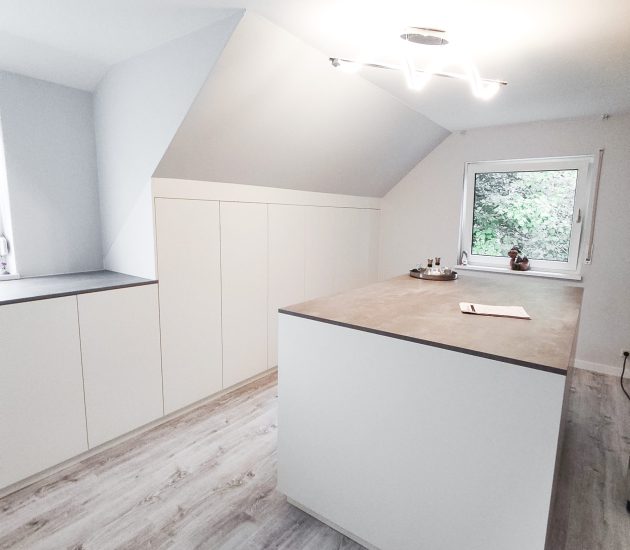
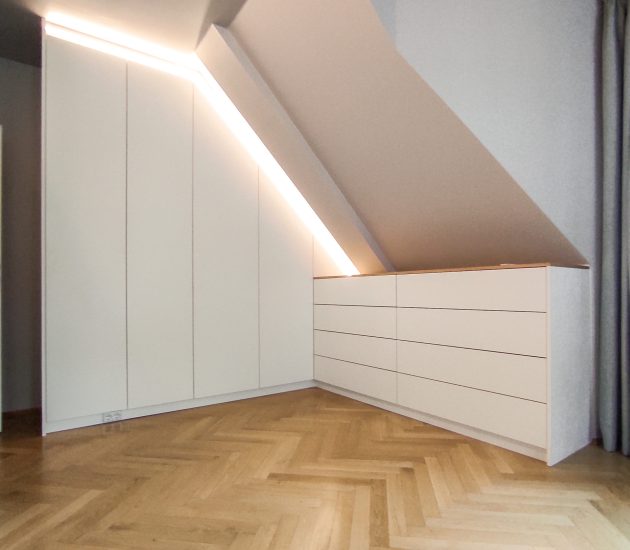
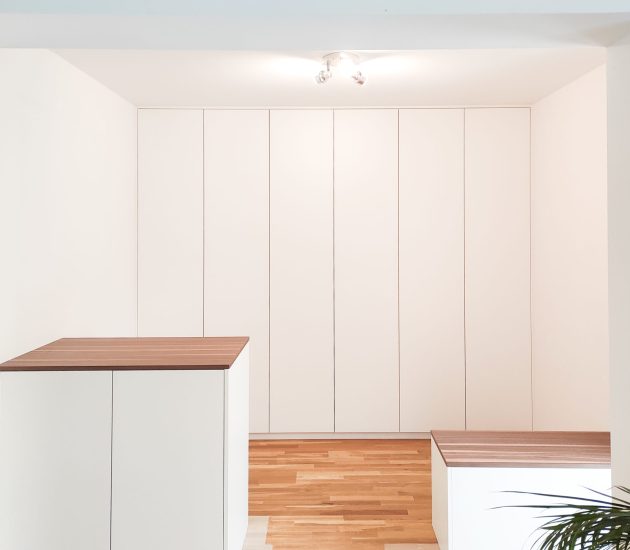

Built-in cupboard vs. freestanding cupboard – a summary
The choice between built-in and freestanding cabinets can have a significant impact on the functionality and appearance of your home. Both types of cabinets offer specific advantages that make them suitable for different living situations and needs.
Built-in cupboards are characterised by their customised design, which allows them to be seamlessly integrated into the room and makes efficient use of every centimetre – ideal for smaller or unusually shaped rooms. However, their permanent installation also means less flexibility in the event of redesigns or moves.
Freestanding cabinets, on the other hand, offer great flexibility and versatility. They are easy to install, move and adapt to changing living conditions. Their variety in design and style makes them easy to integrate into any interior design, even if they may not use the specific space as efficiently as built-in cabinets.
Ultimately, the decision for one type of cupboard or another depends on your personal needs, the available space and your long-term living plans. By weighing up the practical and aesthetic aspects of each option, you can make an informed choice that will improve your everyday life and beautify your home. May your cupboards not only be practical, but also a source of joy and an expression of your personal style.


